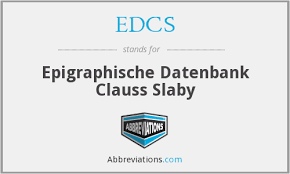CO8 Epitafio de un cazador
Referencia CIL II2/7, 473; CLE 413 | Descripción | Letra | Localización | Cronología | Edición epigráfica | Traducción | Aparato crítico | Comentario | Tipo de verso | Texto dividido en versos y signos métricos | Imágenes | Bibliografía | Enlace a BBDD | Nombre de autor/autores |
CO8 Epitafio de un cazador
Descripción
- Idno filename 22/01/0096
- Tipo de inscripción: Sepulcralis
- Descripción del material: "Fragmento de filabre, roto por la parte derecha e inferior, no pudiendo advertirse los mas versos que contubo", VILLACEVALLOS. En su dibujo reproduce la forma de las letras y en el margen izquierdo del folio escribe la primera palabra, Inspice, a tamaño natural, como estaba en la piedra (0'7).
Letra
- Medidas de las letras:(English) Sin datos sobre medidas de las letras, tendentes a la cursiva cm
- Descripción de las letras:Sin datos sobre medidas de las letras, tendentes a la cursiva.
Localización
- Lugar de hallazgo: Hallada en Castro del Río, de donde fue trasladada en 1730 a Córdoba, a casa de VILLACEVALLOS.
- Geolocalizacion
- Lugar de conservación: (English) Desaparecida
- Ubicación con NOMENCLATURA MODERNA con ESCALA MACRO España / Córdoba / Castro del Río
- Ubicación con NOMENCLATURA ANTIGUA con ESCALA MACRO Hispania / Baetica / Astigitanus
Cronología
- Datación de la inscripción: Entre el año 1 y el año 99
Tipo de verso
- Tipo de verso: Dactílico (ritmo)
- Corresp. verso/línea: No
- Distinc. prosa/verso: No
Edición epigráfica
a) ínspice qui trans[is ‑ ‑ ‑]
venator studio ma+[‑ ‑ ‑]
lucorum cultor s[‑ ‑ ‑]
íungere qui vallis [‑ ‑ ‑]
5 adque novas scrobi[bus ‑ ‑ ‑]
[N‑ ‑ ‑] e [‑ ‑ ‑]
[V‑ ‑ ‑] o [I‑ ‑ ‑ ]
[S‑ ‑ ‑ ] ?
b) Iulia[nus]
Texto dividido en versos y signos métricos
inspice qui transis[—] lkk|ll|[x/…]
venator studio ma[—] ll|lkk|l/x[…]
lucorum cultor s[—] ll|ll|l/[…]
iungere qui vallis[—] lkk|ll|x/[…]
5 adque novas scrobibus[—] lkk|lkk[x/…]
Traducción
a) Fíjate, tú que pasas por aquí […] cazador con afán […] habitante de estos bosques […] quien […] unir con cercos […] y nuevas con hoyos. b) (acróstico): Juliano.
Bibliografía
Villacevallos, 1753, ms. BCC 60-1-17, 203r; Diversii, saec. XVIII, ms. BCC 56-4-9, sine foliorum numeris; Velázquez, saec. XVIII, ms. RAH 9/4106, involucrum 4, 3c; Capdevila 1670, ms. BAHM 621 apud Mestre 1990, 16 (inde Mayans apud Burmann, 1773, XLIV [inde Meyer 1835, I, 2, 168 et II, 2, 112 nº 1465]); Pérez Bayer, ms. 1782, 12v; ex Velázquez et Bayer Hübner II 2314 (inde Bücheler, CLE 413, cuius exemplum in linguam Hispanicam vertit Fernández Martínez 1998-99; Cholodniak 1904, 913 [inde Thigpen 1995, 330, appendix 3, nº 23]; Fita 1916, 117; Vives, ILER 5787; Piernavieja 1968, 58–59 n. 20 et CIDER, 31–32 et 234 nº 1; Cugusi 1986, 94 [inde HEp 1989, 249]) et id., cf. II 2335 et EE VIII p. 352; ex Mayans Stylow, II2/7, 473; Martín Camacho 2008, 184–193; id. CLEB ES, CO3, qui in linguam Hispanicam vertit. – Cf. García y Bellido 1967, 199–200; Mariner 1952, 52 et 184; Hernández Pérez 2001a, 192, 205–206, 211–213, 226 (adn. n. 858), 224, 247 (adn. n. 961); Gimeno – Stylow 2003, 195 (n. M. Vill. 86).
Aparato crítico
Versus dissimiliter exempli causa suppleverunt Bücheler, CLE 413 et Cholodniak 913. 1 tran… Villacevallos, Diversii; tra… Velázquez, Pérez Bayer. – 2 maii Diversii (haud recte post suppl. maiora); ma… omnes exc. m… Cugusi 1986, haud recte. – 3 cultor Velázquez, Pérez Bayer; cultor e… Capdevila, Mayans. – 4 valli Velázquez. – 5 scrob… Velázquez; sc… Capdevila, Mayans. – 6 omiserunt omnes; IVLIANI in achrostico esse suspicavit Cholodniak; IVLIANVS Piernavieja CIDER, Cugusi 1986 et Stylow, CIL II2/7.
Comentario
Dactylic verses, but it is impossible to ascertain whether they are a series of hexameters or elegiac distichs. Epitaph on the theme of hunting and work in the fields. L. 1. verbis inspice qui transis… is an appeal to the passer-by, perhaps so that he can read a possible acrostic, cf. CLE 511,10; CLE 108,10-12; vid. Martín Camacho 2008, 186-187, 189-190. L. 2 refers to his liking for hunting, cf. CIL II,2335, 3; or Cic. off. 1,108, 2; Ov. met. 3,413. L. 3. lucorum cultor interpreted as farmer (cf. Piernavieja, Cugusi and Hérnandez Pérez based on Verg. georg. 1,14 and Ov. fast. 5,499) but, given the previous line, lucus could refer to a wood consecrated to Diana, cf. CLE 256, according to Bücheler, regionem Dianae sacratam, where the author, silvarum cultor, offers trophies to a temple of Diana; in addition, in Hispania there is a lucus consecrated to Diana with an epigraph dedicated to her in Segobriga, Hübner II,5874; and lastly in CIL II,2660 there is a reference to another temple dedicated to the same goddess and its reverse side begins with: aequora conclusit campi divisque dicavit / et templum statuit tibi, Delia Virgo Triformis: that is, a sacred grove, where the author used to hunt (cf. l. 4. iungere qui vallis: this may be the action of joining and fencing off plots of land). To the interest in hunting l. 5 adds the work of cultivating the land.
Nombre de autor/autores
- Nombre de autor/autores:J. Martín Camacho
- Última modificación2024-02-01 13:08:11
Puedes descargar esta




